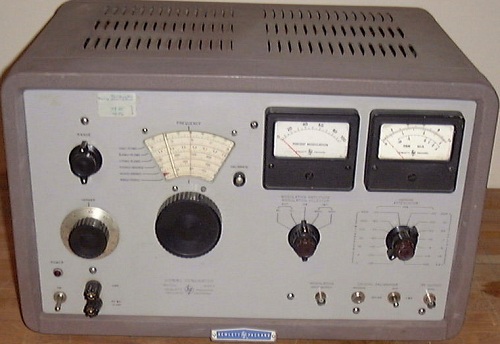Hewlett Packard Model 606A - Signal Generator
Hewlett Packard 606A (Instruction/Service Manual)
The Hewlett-Packard Model 606A is a general purpose signal generator with a frequency range of 50 kHz to 65 MHz. The instrunient has a direct reading frequency dial calibrated to an accuracy of 1%. Output is held constant within ± 1 dB and is continuously adjustable from. 01 microvolt to 3 volts into a 50 ohm resistive load. An internal crystal calibrator provides check points at 100 kHz and 1 MHz intervals with an error of less than 0.01%. A front-panel meter accurately indicates the percent amplitude modulation for frequencies within the modulation bandwidth of the signal generator.
The Model 606A has a highly refined amplitude modulation system which allows modulation up to 90% with low distortion and incidental FM. This feature makes possible precision distortion checks of receivers from antenna to output. The instrument can be internally modulated at 400 or 1000 Hz. It can be externally modulated from dc to 20kHz or more, depending on RF frequency in use. Complex waveforms, square waves, and dc voltages may be used to modulate the Model 606A for testing and evaluating filters, networks, amplifiers, and receivers.

The level of the RF oscillator is stabilized by a feedback circuit from the RF oscillator to the oscillator level control tube. In a similar way the RF output and modulation levels are held constant by a feedback loop from the RF output through the differential amplifier to the modulator. The rest of the block diagram represents standard circuitry for signal generators.
Hewlett Packard 606A - Signal Generator
Do you have content, to add, about the Hewlett Packard 606A - Signal Generator or associated topics? Please feel free to Share it, here!
Return from Hewlett Packard Model 606A - Signal Generator to Test and Measurement Equipment Return from Hewlett Packard Model 606A Signal Generator to History of Recording - Homepage |
